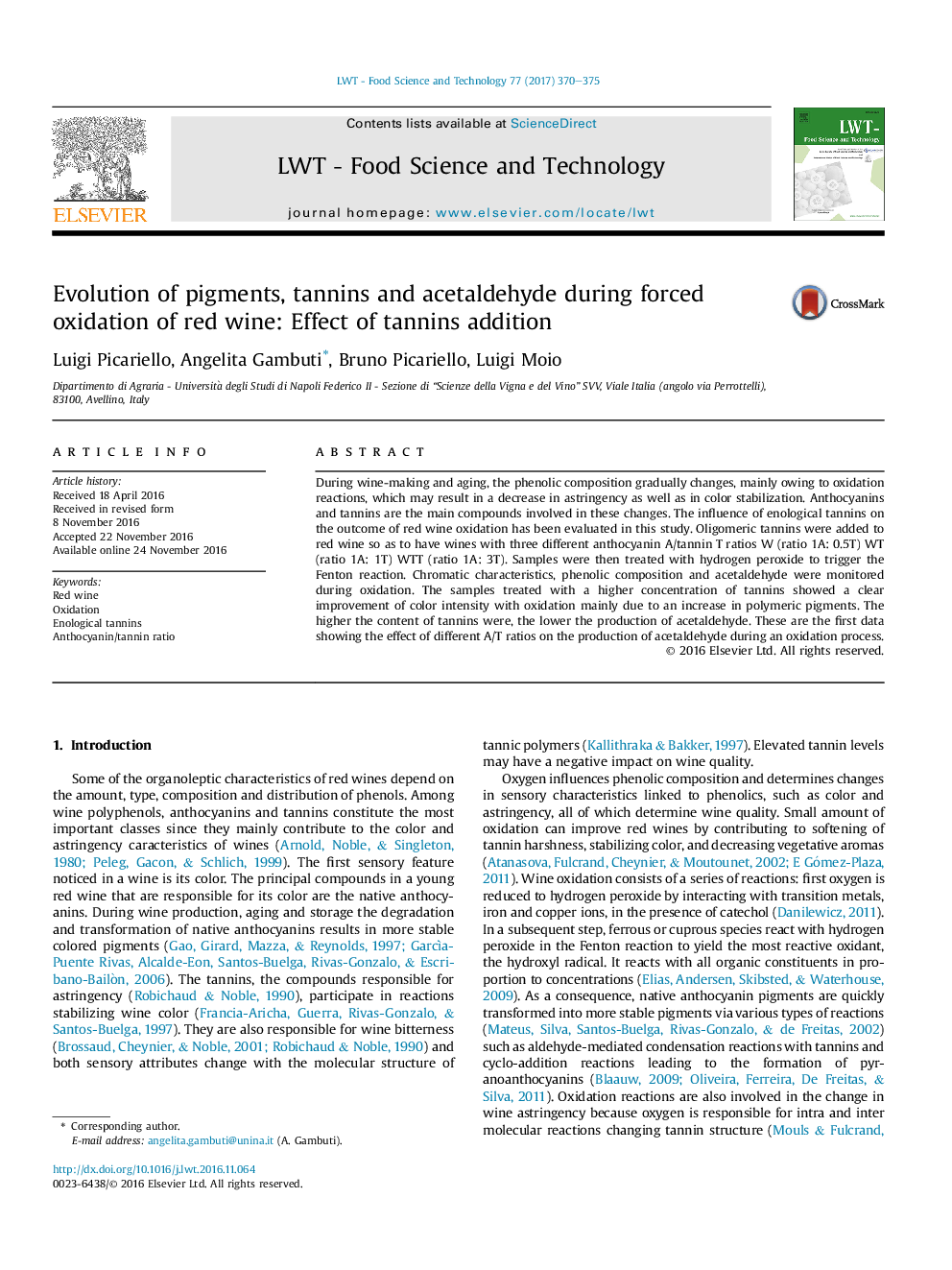| Article ID | Journal | Published Year | Pages | File Type |
|---|---|---|---|---|
| 5768875 | LWT - Food Science and Technology | 2017 | 6 Pages |
â¢Enological tannins increase color stabilization of red wine during oxidation.â¢Polymeric pigments and BSA precipitable tannins rise during oxidation.â¢The higher the amount of added tannins, the more the polymeric pigments increased.â¢The higher the amount of added tannins, the less acetaldehyde produced.
During wine-making and aging, the phenolic composition gradually changes, mainly owing to oxidation reactions, which may result in a decrease in astringency as well as in color stabilization. Anthocyanins and tannins are the main compounds involved in these changes. The influence of enological tannins on the outcome of red wine oxidation has been evaluated in this study. Oligomeric tannins were added to red wine so as to have wines with three different anthocyanin A/tannin T ratios W (ratio 1A: 0.5T) WT (ratio 1A: 1T) WTT (ratio 1A: 3T). Samples were then treated with hydrogen peroxide to trigger the Fenton reaction. Chromatic characteristics, phenolic composition and acetaldehyde were monitored during oxidation. The samples treated with a higher concentration of tannins showed a clear improvement of color intensity with oxidation mainly due to an increase in polymeric pigments. The higher the content of tannins were, the lower the production of acetaldehyde. These are the first data showing the effect of different A/T ratios on the production of acetaldehyde during an oxidation process.
